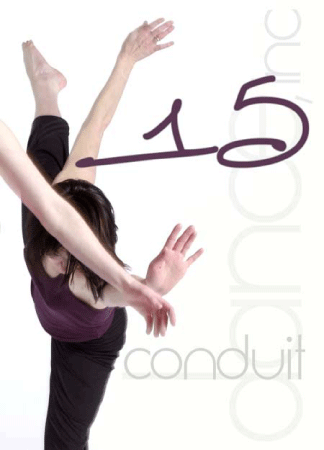By Bob Hicks
Let’s hear a great big round of applause for failure, art’s best friend.
 Mr. Scatter got back to Puddletown just in time to take in Sunday night’s final performance of Conduit‘s four-night 15th anniversary benefit celebration, for which he’d been asked to give a little halftime talk with drummer/writer/arts instigator and general man-about-town Tim DuRoche.
Mr. Scatter got back to Puddletown just in time to take in Sunday night’s final performance of Conduit‘s four-night 15th anniversary benefit celebration, for which he’d been asked to give a little halftime talk with drummer/writer/arts instigator and general man-about-town Tim DuRoche.
We’d had about a minute and a half to compare notes, but of course, we’d both been thinking about it, and Tim’s comments were, as usual, as sharp as a full-lather shave in a Wild West tonsorial parlor.
Pressed into speech, Mr. Scatter found himself to his own surprise abandoning his sparse notes and talking instead about the joys of failure. Over the years, he confessed, he’d seen some things in the Conduit space that had made him shudder. Then he’d gone home and thought about them, and after he’d thought a bit, sometimes he’d still shudder. But other times he’d think, “Aha! That’s what they were getting at!” and his window of perception would open a little wider.
It’s possible, of course, to overstate this failure thing, and Mr. Scatter hopes he didn’t. Over the years he’s seen a lot more that he liked, or at least appreciated, at Conduit than otherwise, from work by national artists such as Bebe Miller and Donna Uchizono to exciting pieces by the likes of Portland artists including Mary Oslund, Tere Mathern, Minh Tran, Josie Moseley, Gregg Bielemeier, Linda Austin and the late Keith V. Goodman.
And it’s important to define “failure” broadly. It includes the occasional full-blown flop, of course, or sloppy technical execution, or plain bad idea. But it also encompasses the experiment that doesn’t quite work, the exploration that reaches in the wrong direction but helps the artist realize where she should reach next, the step away from the cocoon of safety into the fearsome liberating fog of the unknown.
Without failure, he said, there can be no art. Failure is as natural and necessary to human beings as breathing. Failure is built into the very fabric of biological life. It’s the genetic mistakes that drive the evolutionary process, and it’s the deliberate and accidental risks that artists and scientists and thinkers take that allow cultural tradition to grow and explore and expand itself and stay alive instead of mummifying.
For art to flourish, it’s important for artists to have spaces where they can feel safe about taking risks. Conduit has been just such a safety net, a place where it’s all right to try things out, to maybe make a fool of yourself (at least temporarily), to step out of your comfort zone and try something different. Sometimes what emerges is a little rough around the edges, in need or sharpening and editing, but genuinely takes artists into new territory. That’s good not just for artists but for audiences, too, who learn in this sort of atmosphere that art is as much a process as a finished object or event. And process, by its very nature, is a matter of failure, learning, and correction.
So, three cheers. Without Conduit, Portland would be a smaller, more timid, less interesting place.
*
One of Mr. Scatter’s biases about art is toward technical assurance, and Sunday’s performance gave him plenty to appreciate in terms of sheer skill. (You can read here Catherine Thomas’s review for The Oregonian of Thursday’s opening-night show.)
He was taken with Mutt (Paired Spectacular: Part Two), in which choreographer Linda Austin and performing partner Richard Decker used distinctive comic vocabulary (and a room-wide string of musical dental floss) to pay loose homage to Yvonne Rainer’s Trio A; and Contact Improvisation, in which Christine Maxwell and Brandon Stewart, moving to live improvised music by Charles Sorgie and Jonathan Brinkley, sidestepped the stereotype of contact improv as macho body slamming in favor of intimate, sensual tenderness.
Two other performances stood out. Katherine Longstreth’s solo Life With Box (read Heather Wisner’s review for Willamette Week of an April performance of the same piece) came to an abrupt and slightly head-scratching conclusion, but was riveting for Longstreth’s exquisite control of her body in small, potent movements. Dancing with the whole body is something of a platitude in dance circles, but too few performers regularly achieve it. Longstreth makes every inch of her body, and every small gesture of it, count.
And Gavin Larsen, recently retired as a principal dancer for Oregon Ballet Theatre, made the audience hope for much more in her post-OBT career. Her carriage is, of course, exquisite, and in Hold My Hand she is a natural fit for the lyrical modernist choreography of Josie Moseley: In this piece Larsen gloriously realizes Moseley’s assured weaving of the ungainly and the beautiful. No failure here. It’s done its job, and dropped out of the mix.